 Get Started
Get Started

Everybody agrees: every company needs to be customer-centric. As a result, we should be in the golden age of consumer research, and in some ways, we are. There has never been so much data available about consumers and it has never been cheaper to conduct a survey.
Despite all of this, the consumer research industry is being disrupted on many fronts. There are new channels to reach consumers, new technologies to collect and analyze data and, as a result, traditional consumer research firms are facing competition. Companies of all sizes are starting to conduct their own research, tech giants are eating a big piece of the pie, and emerging players such as POTLOC are leveraging this new paradigm to enter the market.
As the co-founder of POTLOC, you might think that I have chosen my camp; that I’m blindly welcoming this new technology-driven era. While we do rely heavily on new technologies and new channels at POTLOC, we have a lot in common with more traditional consumer research firms.
Like them, we want to deliver statistically significant results to our clients, and like them, we think no one channel can unilaterally reach everyone. The importance is to talk to your customers… where they are today.
We decided to focus solely on social media surveys for now, as we think it has become the dominant channel through which to reach consumers. However, we believe there are still cases where a phone survey, a web panel or an intercept survey are the right tools for the job.
We also believe social media is not going to be the dominant channel forever. As you’ll discover in this report, there are many other (new) ways to get consumer insights, and we are looking at them with a keen interest, as you may expect.
While concerned with the threat of tech giants and the rise of non-scientific surveys, I’m primarily optimistic when thinking about the future of consumer research. It’s not going to be an easy ride for the industry. There will be winners and losers. However, one party will ultimately win. It’s not Google, Facebook or Amazon. It’s actually the consumer. Without a doubt, they will increasingly be heard and their needs will be served better and better.
Rodolphe Barrere, Co-Founder and CEO of POTLOC

Easier, Better, Faster, Stronger. This futurist anthem rocking the last decade became a reality in the consumer research industry. With the emergence of disruptive technologies, surveys became cheaper, more accessible and capable of reaching huge samples with stunning accuracy.
As a result, customer centricity is no longer reserved for the elite and has spread to smaller companies. That being said, this democratization raises some concerns. Getting consumer feedback is no child’s play. Simple questionnaires, with lack of statistical methodology, can lead to false results and mislead decision-makers in their customer-centric strategies.

The marketing research industry is facing several headwinds. Still, it has never been easier and as inexpensive to get consumer feedback. Not only is it possible to reach them very affordably through the internet, it is also increasingly less necessary to ask them any questions. In fact, an unprecedented amount of behavioural and qualitative data can be collected without resorting to an opinion survey.
Are Polling Firms Threatened?
Historically, market studies and consumer research answered very different questions. Market studies were the domain of firms like Nielsen, investigating what people were doing. On the other hand, consumer research was the domain of polling firms, which were trying to understand why people were doing what they were doing.
However, in 2018, it is sometimes possible to find out people’s behaviours without asking them any questions, thanks to social media and the many sources of online reviews. By analyzing Yelp reviews about restaurants, Google Places about retail, and Amazon reviews about products; the question “why” can often be answered without employing a survey.
That's exactly what Jacob Finch is doing. Finch is the director of consumer research at SharkNinja, a leading manufacturer of vacuum cleaners: “We pull in all the reviews about our product, and categorize those reviews using natural language processing and sentiment analysis.”
This kind of technique may cost less than a survey, but for SharkNinja, whose annual sales exceed $1billion, the main benefit is its speed: "The speed of marketing research enables us to market our products more quickly, explains Finch. For us, the difference between reaching a final [vacuum] design in June instead of May might mean not being on the shelves in November and losing $20 million in sales."
SharkNinja also uses web panels to gauge its customers’ opinions. Again, Finch prefers web panels to telephone surveys because of the reduced time in obtaining results. "Today, the web panel is the most widely-used survey method, because it is cheaper and much faster," says Michel Berne, partner and co-founder of Ad Hoc Research.
For Michel Berne, however, the trend is not necessarily threatening, since the kind of work done by his firm has simply evolved. Today, the firm conducts far fewer telephone surveys and significantly more email surveys using client lists and polls via web panels. "When we discovered the screwdriver, we didn’t say that the hammer was no longer any good to us,” says the pollster.

As it becomes faster and less expensive to poll consumers, more businesses can use surveys to make decisions on things that could not have been previously surveyed. Product management methods popularized by Silicon Valley tech giants can test each iteration of a product in real time, which could become available to physical retailers and manufacturers.
"I can conduct more surveys than ever before, says Finch of SharkNinja. As surveys get cheaper and more ubiquitous, it's up to everybody that companies make sure they don’t abuse them.” He sees a world in which consumer opinion is becoming so high in demand that consumers will stop responding to polls, just as web users have virtually stopped clicking banners, since they do not even notice them anymore.
While he sees a world where over-solicited consumers are once again more difficult to survey, he believes businesses will become more aware of their customers’ opinions. In particular, he believes data collection methods will continue to be increasingly more targeted, and will require increasingly less input from the surveyed customer. "We already do that with our robo vacuum. It’s connected to an app that sends data every minute. Where does it charge, how long and when is it used, were the chairs up, etc. I think the future is connecting real behavioural data with customer feedback.”
The world’s leading survey provider, SurveyMonkey, went public on September 26th, 2018 to the tune of $1.5 billion. Google Consumer Surveys has reached 50 countries, and Instagram makes polling users instant and engaging. While crunching big data and tracking trends are vital objectives, surveys remain an invaluable source of information for market research businesses.
As survey providers and platforms grow in popularity, accessibility and audience, businesses can conduct informative and wide-reaching surveys in a few clicks, gathering data and relevant insights with ease. The traditional market research business model – particularly firms armed with clipboards and hefty questionnaires – are under threat.
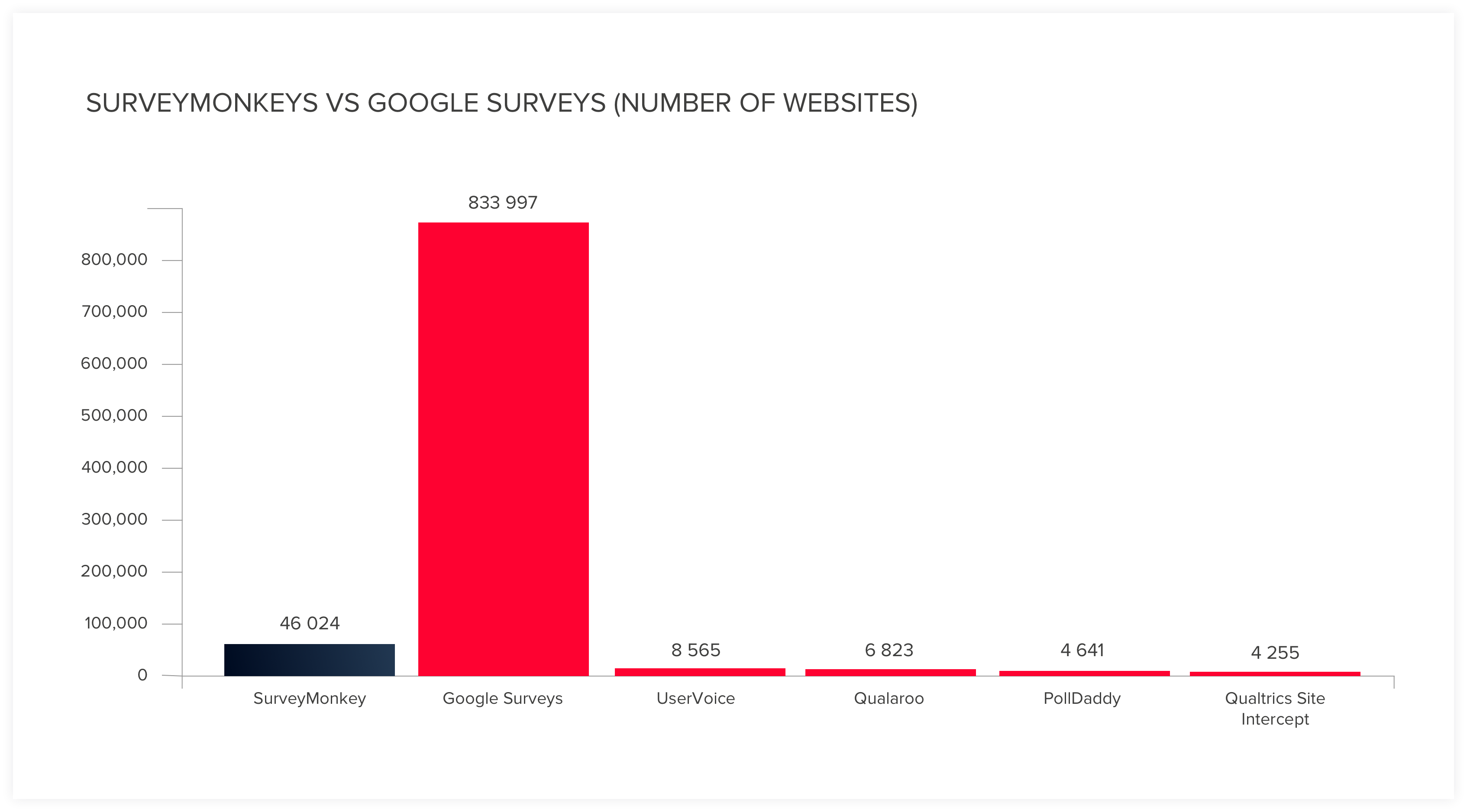
During SurveyMonkey’s IPO, the SAAS stock soared 60%, showing the initial undervaluing of the group. SurveyMonkey now holds a 5% market share, and is the second largest online survey provider, largely thanks to straightforward user experience, increased mobility for on-the-go surveying, and their a smorgasbord of technology that makes market research faster and more effective.
SurveyMonkey challenges Google with its wide-reaching features. It offers more question types, templates and even detailed questions written by survey experts. In the customer service arena, 24/7 support ensures a comparative advantage, and real-time data slicing is a neat touch.
Nonetheless, despite SurveyMonkey’s success, Forbes indicates that Google Surveys accounts for a staggering 91% of the online survey market, far outstripping its competitor. While SurveyMonkey has its advantages, Google Surveys stands by helping its clients find respondents across the globe at a low cost. For example, pricing for 1 Google Surveys question is between 10-30 cents, and 2+ question surveys cost between 1-3 dollars.
According to Heather Primm, director of operations at Data Decisions Group, Google’s tool allows for quick responses to urgent questions and access to immediate results. “A great fit for those urgent one-off questions that come up in a meeting at 5 p.m. and need to be answered by 9:30 a.m. the following morning.”
Google Surveys initially launched in 2012 as Google Consumer Surveys, but dropped the "consumer” in 2016 when it separated into two distinct products: Google Surveys, a pay-as-you-need survey platform, and Google Surveys 360, which is more commerce-centric. In March 2018, Google continued to build on its heavily-solicited service: Google expanded its survey offering to more than 50 countries, as well as increased support for 12 different currencies and 18 languages. To top it off, Google has improved the billing process and enriched contracting flow for surveys.
Michael Cumberbatch, product manager at Google Surveys, comments, "in 2012, the mission was to make quality research available to organizations of all shapes and sizes… Now you can survey users around the world." Google's future plans include opening up iOS targeting and further reducing the cost of surveying so small businesses can access data previously only accessible to large companies.
Google's improved software threatens to disrupt the industry, particularly by making complex market research methods available to a vast audience at a low cost. As their blog post announcing the new product back in 2012: Launched in 2012, Google Surveys, enables companies to ask simple questions and receive quantitative results quickly, accurately and cost-effectively.
Much like SurveyMonkey, Google is not selling a full-service market research tool, but rather a hybrid, cheap, do-it-yourself online survey product, combined with an expensive, hands-on approach offered by a traditional firm. It allows marketers to create, launch, and analyze surveys and perform market research while extending the ability to survey their own websites or tap into Google's panel of more than 10 million online respondents. Though experienced market researchers should still analyze survey results for optimal and accurate readings, businesses are still able to quickly pick out consumer trends at a glance with user segmentation and basic analytical skills.
The market research industry must take note. It has never been easier— or cheaper — to conduct a survey in any number of countries across the globe. As a result, there are concerns over the “dumbing down of research” as clients begin to circumvent traditional research firms in favour of easy access tools.
Moreover, with few quality controls in place, the proliferation of biased results can corrupt more data. Robert Gray, the president of Insightlink Communications, asks: "If we, as professional market researchers, can no longer provide thoughtful survey design and reliable findings to our clients, why are we even in business?" Suppliers must focus on the insight gained from data collection to stay relevant in the DIY consumer research era.
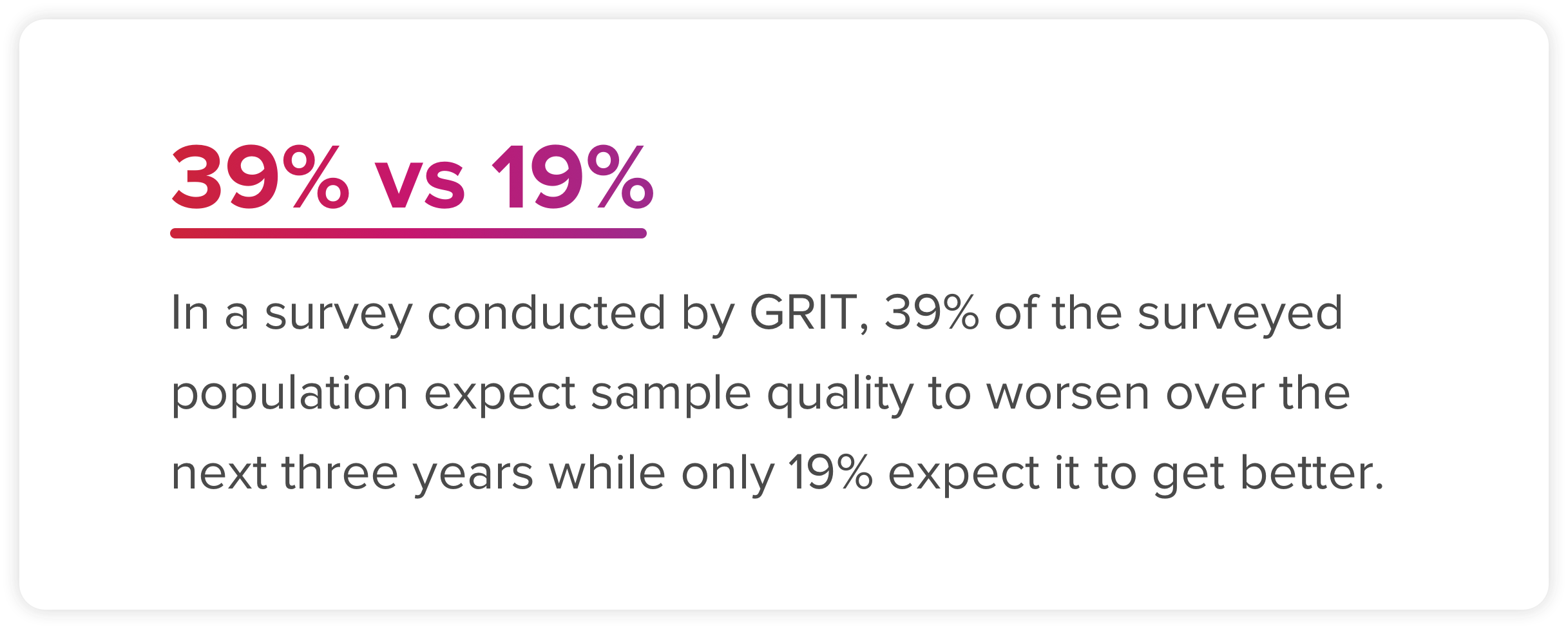
Adriana Rocha, CEO of eCGlobal, confirms that although DIY surveys risk harming market research firms’ efforts, there is still ample opportunity for market research to flex their muscles. She explains: “It is cheap, easy to use, and seems to be very accurate, but still needs to be integrated with more data, information and knowledge to effectively help brands and organizations take better decision making; this is where the big opportunity for market researchers resides!”
Does my Feedback Look Good in This?
Facebook also makes it possible for businesses to ask questions to a broad group of people at the touch of a button. Individual users can poll friends in 3 clicks, and by using their function ‘Simple Surveys,' Facebook offers businesses a market research tool that pops up in users' news feeds. Gone are the days of the ‘dreaded clipboard people,' or market researchers with iPads in the street; these images fade into obsolescence. Facebook-owned Instagram offers a polling function, which, although primitive, marks another means of striding into tech users' private spaces.
From massive tech companies to simple applications, gargantuan amounts of user data are readily available in business, from which decisions can be made and trends can be understood. Nonetheless, firms value the worth of directly interrogating consumers through market research surveys. As research consultant Fromen explains, big surveying companies continue to "harvest the type of longitudinal research that many skeptics have already claimed is dead." The big tech companies have disrupted market research methods, making it a layman’s game where intercepting the consumer is easier than ever.
The rise of SurveyMonkey, Google Surveys, constant polls and instant feedback from consumers has transformed the market research industry.
While traditional survey providers are facing headwinds, there has never been a greater need for their expertise. The ability to survey is a given nowadays, but ability to provide in-depth analysis, scrupulous insight and explanations cultivated thanks to years of experience is exceptional; a unique selling point that market researchers must project to compete with DIY surveys.
As Frederic-Charles Petit, CEO of Toluna makes clear: “The market research industry faces challenges adapting to this new world order. It's not just about adopting technology; the need is deeper.”
Delving deeper and employing a consultative approach as opposed to merely presenting answers will become a key strategy for market researchers. Whether or not traditional market research firms are falling by the wayside as a direct result of the rise in ubiquitous DIY market research methods remains to be seen.
All studies agree: companies that focus on their customers have the greatest success. On average, a retailer that improves its customer retention by 5% will increase its profits by 25% to 95%.
For the past 15 years, customer centricity has gained credibility because it has been proven to be beneficial. However, traditional consumer studies that evaluate it are extremely expensive and can be difficult to interpret for non-specialists.
In 2003, Andy Taylor, the CEO of Enterprise Rent-A-Car, researched which would be the best indicator to increase in order to better predict his company’s future growth and the loyalty of its customers. The Net Promoter Score (NPS) was thus born.
Since then, the popularity of the Net Promoter Score has exploded, especially due to its simplicity, while detractors of the method have also increased. Whatever one thinks about it, nobody can deny that the method has contributed substantially to the popularization of consumer research.
Click here to learn more about the NPS measurement
The influence of customer-centric strategies and the growth of quick and simple measures like NPS are intimately linked.
Such measures have emerged thanks to new technological tools that make it possible to simulate one-on-one relationships with the consumer, on a very large scale and at a lower cost. These new CRMs (Customer Relationship Management softwares), new communication media and survey tools have helped build real relationships with customers at an affordable cost. Retailers now understand their customers’ needs, their reasons for visiting or abandoning, and their intention to buy.
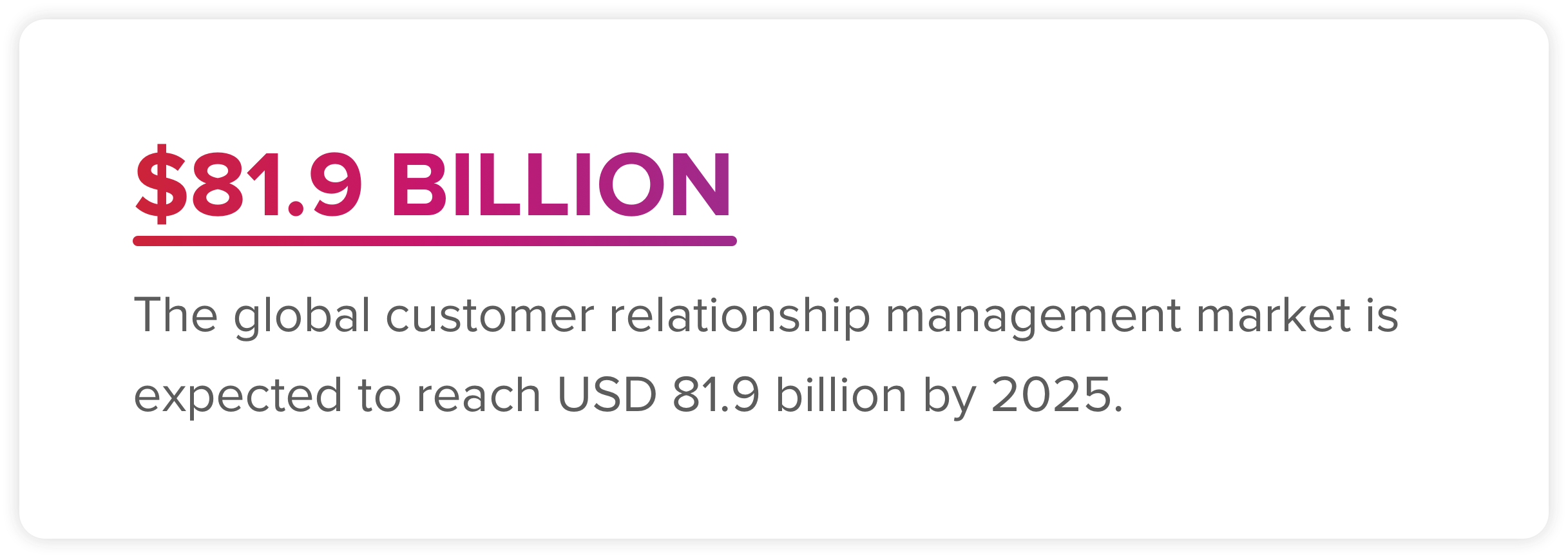
NPS has established itself as the benchmark for estimating consumer loyalty. According to a study by the Nielsen group, which specializes in consumer insights, 83% of respondents trust advice from their friends or family members more than any other recommendation. Even in the top echelons of the Fortune 500 ranking, which ranks the top 500 US companies according to their overall sales, the various companies are competing to attract their customers’ loyalty.
Indeed, successful campaigns such as customer satisfaction have become a sonic boom, inspiring other companies to try to match the tune. Since Amazon announced it wanted to "become the most customer-focused company in the world," the industry has followed suit. Consumers’ demands increase in proportion to the attention given to them. Players coming onto the scene late have no choice but to run faster to catch up, otherwise their customers will completely abandon them.
This indicator’s dissemination has very real consequences on how companies operate.
Global spending on consumer and market research surpassed $44.5 billion in 2016 and the budget allocated by businesses for this research increases every year.
But the cost of these services has driven organizations to turn to new ways of questioning customers, including faster, less expensive homemade surveys. Google Surveys, with a 90% market share, enables businesses to customize their surveys and interview a wide range of consumers at a lower cost.
Consumer insights have never been so important, and their access never easier. As a result, marketing research firms face serious challenges and have no choice but to differentiate themselves. They must go upmarket or offer consulting services in order not to become inferior to tools that are as equally powerful and accessible to everyone.
This indicator’s dissemination has very real consequences on how companies operate. Global spending on consumer and market research surpassed $44.5 billion in 2016 and the budget allocated by businesses for this research increases every year.
But the cost of these services has driven organizations to turn to new ways of questioning customers, including faster, less expensive homemade surveys. Google Surveys, with a 90% market share, enables businesses to customize their surveys and interview a wide range of consumers at a lower cost.
Consumer insights have never been so important, and their access never easier. As a result, marketing research firms face serious challenges and have no choice but to differentiate themselves. They must go upmarket or offer consulting services in order not to become inferior to tools that are as equally powerful and accessible to everyone.
In homemade surveys, the lack of data control sometimes allows the consideration of absurd statistical nonsense. This is the disadvantage of homemade surveys. The purpose of consumer research is to confirm or invalidate consumer insights using robust facts.
These hasty studies, however, are not based on any real empirical basis and serve only as arguments used by policy makers to validate their own strategies. Moreover, studies show that the use of several indicators rather than just one, makes it possible to predict customer loyalty rates much better.
The Net Promoter Score has made it possible to popularize customer-centric strategies. The indicator is the first point of contact with consumer research for many companies. Nevertheless, the NPS is only one indicator among many others to better understand customers, and despite its simplicity, its validity depends on that of the samples surveyed.
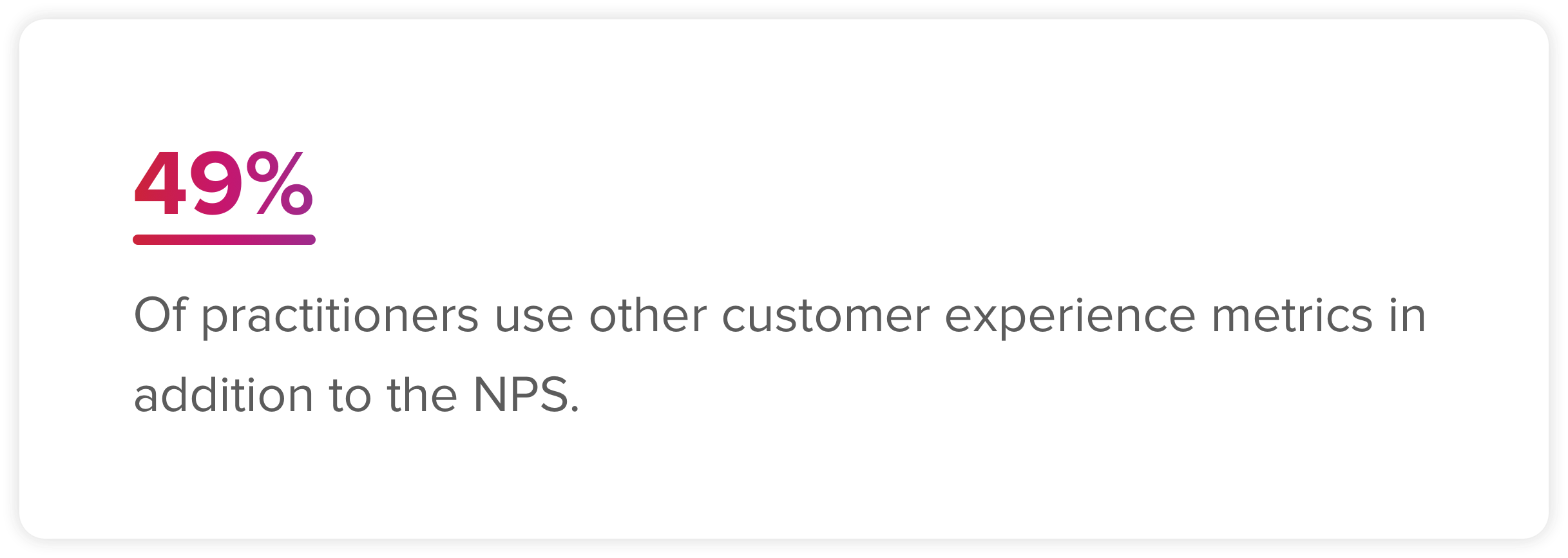
The realm of phone surveys is over. However, does this imply less communication with consumers? Quite the contrary. Retailers have to reach their customers where they are, and this place is online. New channels are popping up as companies learn to follow their clients on their computers and cellphones.
Yet, the success factors in the industry haven’t changed. Surveyors still demand low prices per respondent, large samples, limited bias and quality responses. While there are definite trends, every channel has its advantages and the best channel depends on each situation. In the following section, we dive deep into today’s dominant channels for performing surveys and present their strengths and weaknesses.

In the last fifteen years, web panels have been described as an efficient method in market surveys. As you may have guessed, the massive adoption of the internet and computing applications among the general public is behind that trend.
A web panel (also referred to as “online or internet panel”) is defined as an access panel of people willing to participate in web questionnaires. An “access panel” specifically means a sample database of potential respondents who declare they will co-operate for future data collection (if selected, that is).
While national statistical institutes, such as the Census Bureau in the United States, have mostly refrained from using such a method, the market research industry has been an early and significant adopter. Before using a web panel, one should consider its benefits and limitations.
Research can be conducted and results received within a few days rather than several weeks or months with face-to-face and phone collection methods. Michel Berne, partner and co-founder of Ad Hoc Research, a market research firm based in Montreal, told POTLOC:
“There is no doubt web panels can be more efficient and faster (than traditional survey methods). Over the years, there has been a significant shift: web panels have essentially overtaken telephone surveys (partly for that very reason). Research that used to take four weeks of data collection now only takes one.”
With traditional survey techniques, you may have to print out questionnaires and provide writing implements to your respondents. You might also have to call them over the phone or interview them in person. With web research panels, these elements are removed from the expense list.
Web questionnaires are set up online and can be adjusted almost instantly, without having to waste any paper. Email reminders can be sent automatically to respondents, at the most optimal time window of their day. This can reduce labour costs tremendously.
An element that often gets lost when discussing web panels is the ability to recruit respondents in different countries. Running surveys remotely in an automated manner is invaluable for international projects, eliminating many roadblocks such as air travel, as well as finding interviewers who speak specific languages proficiently.
Many web panel sites advertise that you can earn $5-$35 per questionnaire. However, chances are participants will need to dedicate at least twenty minutes if not one hour to complete just one. This often translates to below minimum wage depending on where the respondent resides.
This incentive structure makes web panels more attractive to unemployed or low income respondents. Furthermore, unlike phone surveys where surveyors will randomly select phone numbers to create a representative sample, web panel members are autoselected, thus making web panel samples non-probabilistic. As a result, we can’t calculate the margin of error for surveys using this methodology.
Evidently, individuals who are able to participate in web panels are those who have access to the internet. If you aim to reach countries or rural areas with low internet penetration, you may want to focus on traditional face-to-face or phone interview methods instead. To put things in perspective, consider that 39% of rural residents in the United States lacked fixed internet broadband service in 2016, compared to 4% of city dwellers. Furthermore, web panels survey their panel members repeatedly, thus reducing the representativity of the selected sample within the panels.
Data integrity can be a concern when dealing with data collected from web panels. Respondents may engage in a number of less-than-optimal strategies to complete surveys so they can obtain the offered rewards or incentives. Such can lead to undesirable responses such as false answers, answering too fast, giving the same answer repeatedly, as well the same respondent participating in multiple surveys.
Individuals involved in market research have a number of reasons for implementing web panel frameworks as part of their strategy. However, like any methodology, such reasoning should be carefully evaluated before and after marketing campaigns occur.
Loyalty programs are nothing new. In fact, they date back a century. A notable, early effort was the US-based S&H Green Stamp program in the 1930’s. Consumers were provided with small stamps when they made purchases from participating retailers, which they could stick onto pages of booklets and redeem them for products when the collected stamps had attained a specific value.
In recent times, merchants and tech startups have conceived forward-thinking programs to gain consumer insights. How do retailers utilize the insights they acquire from such programs? Are these new frameworks a threat to traditional surveys? Let’s explore these factors.
In contrast to traditional rewards programs built around a retail point-of-sale system, Toronto-based Drop uses banking APIs to read one’s credit card transaction data directly, giving points for making purchases with partners within their program.
The points can then be spent on personalized offers. For example, a discount on coffee at Starbucks or a free ride on Uber (a proposition that is designed to resonate with millennials).
The ability to monitor shoppers’ purchase behaviour through their credit use has convinced prestigious retailers such as Sephora, Bloomingdales, The Body Shop, Amazon, Under Armour, Casper and Boxed to join the Drop program.
Drop’s CEO and co-founder Derrick Fung told TechCrunch the program is a great way for participating retailers to better determine incremental spending (due to Drop’s traceable qualities, for lack of better word). For example: proving music festival goers spend more on brands that sponsored a specific event.
UK-based Flux is another interesting concept. Here’s how this new loyalty program works: once you’ve enabled Flux within the Starling app (a popular “neo bank”), you make purchases at supported merchants using Starling and any loyalty rewards you earn are automatically displayed in your Starling account, alongside a fully itemized digital receipt. When you have accumulated enough points to qualify for a free item, Flux will then send cash-back to your Starling account on behalf of the Flux retailer.
Flux wants to integrate at the banking app level to offer users a consolidated view of earned loyalty points across all their bank accounts. If you earn Flux points with one specific bank card, they are displayed and can be redeemed from any other bank cards or accounts you have linked to Flux.
This concept takes its inspiration from the open banking movement, which is drastically changing the UK and European B2C financial sector as we speak. This “multi-account” approach provides merchants with a great deal of “enriched data” that allows them to perform multivariate analysis and other forms of advanced testing.
Modern loyalty and rewards programs have proven to be quite popular with both consumers and merchants. However, that doesn’t mean they can entirely replace traditional survey techniques.
Measuring the operational aspects of a loyalty program such as new signups, offer uptake, and earn-and-burn transactions is important, yet it only reveals what happens in response to a marketer-controlled message.
Retail professionals should also analyze how loyalty is improving customer intimacy, involvement with a brand, brick-and-mortar store visits, customer service call sentiment, shared content, and brand affinity.
That being said, loyalty and rewards programs can wonderfully complement traditional survey methods for the purpose of gathering consumer insights.
Another popular way to reach customers is through social media. In fact, social media surveys aren’t much different from the mail surveys of the old days. They are, after all, lists of questions people can answer by themselves. However, instead of being sent by mail, those online questionnaires are pushed to their target market demographics through social media ads. Let’s explore some of the reasons as to why they have become increasingly popular in recent years.
In Canada, 94% of the adult population has signed up to at least one social media platform. Facebook boasts a 84% sign-up rate; their platform is often viewed as the most suitable for pushing online surveys. As a result, a survey pushed through Facebook Ads can reach a much more representative sample of the Canadian population than a restricted landline phone survey.

That being said, a phone survey using both landline and cellphone numbers can reach a higher percentage of the population than Facebook or even social media at large, with 99.3% of Canadian households having either a cellphone or a landline.
Consequently, online surveys pushed through Facebook Ads have a few known biases. They tend to reach fewer low income households, the unemployed being under-represented on Facebook in Canada, with only 77% of them on the platform. Online surveys conducted through Facebook Ads also reach fewer older people, with only 61% of Canadians aged 55 to 64 registered on the platform. Finally, Facebook reaches more women (88%) than men (81%) in Canada.
That being said, weighting the results of the survey, or even targeting social media users by age group or gender can correct these biases. However, in many cases, social media biases correlate to the customer profile many brands want to survey in the first place.
Thanks to social media and search engine giants, you can reach out to customers within specific geographical zones (usually by postal code) and venues through listings and ads that leverage mobile devices’ positioning systems. Their audience is often measured in billions.
Similar to the introduction of phone surveys in the 1970s, social media surveys have tremendous advantages over mainstream approaches, all the while being much cheaper.
Social media networks can easily target specific audiences for different surveys. They can employ traditional demographic models, including age, location, gender and other factors, to direct surveys to the people retailers need to target. Simultaneously, surveys are conducted with a truly random (ergo representative) sample.
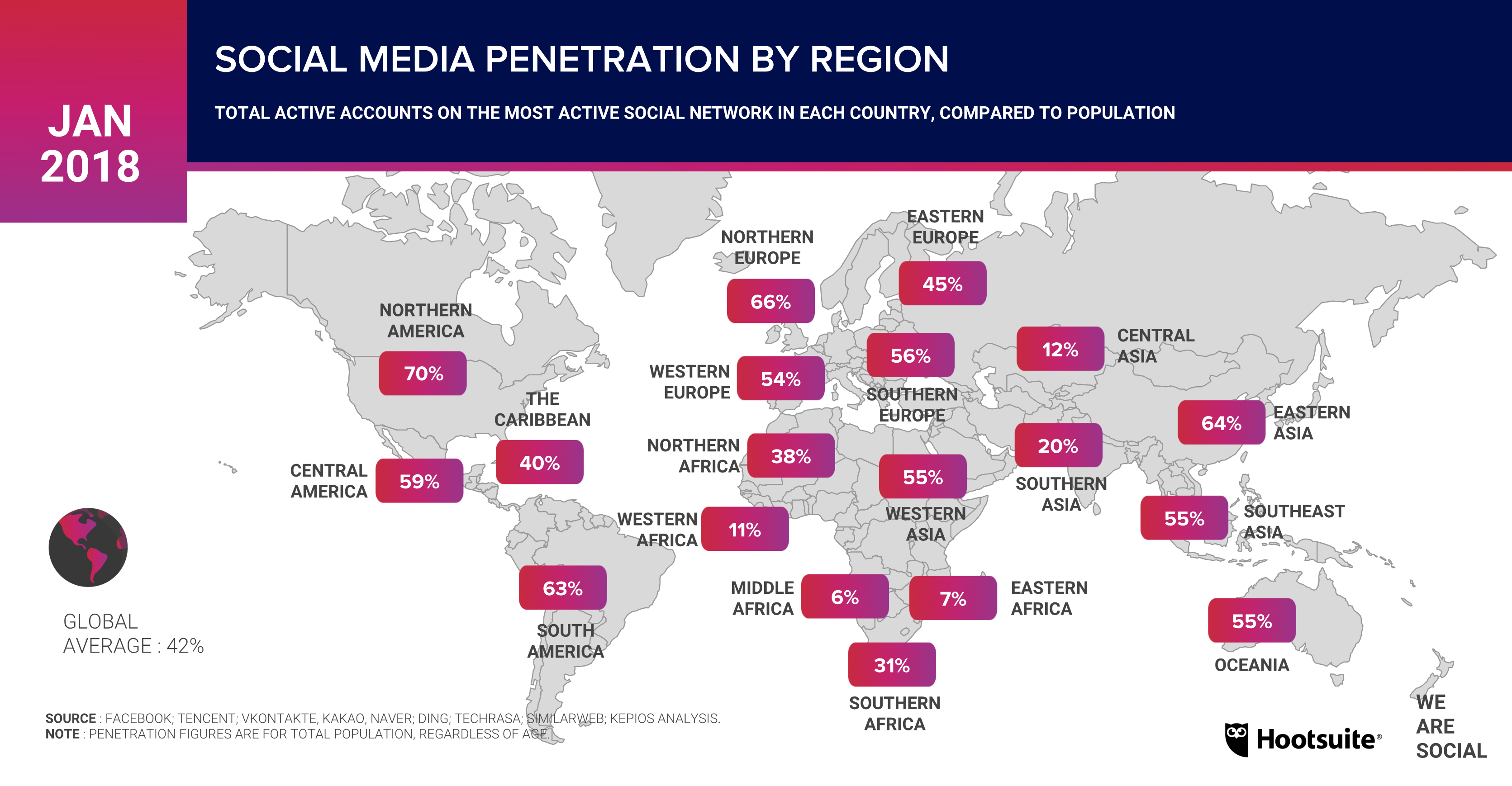
Companies relying on social media surveys to gather and analyze data are also aware that a vast number of people use social media on their smartphones, so when they set out to conduct surveys through social networks, they also rely on that prerequisite. The substantial amount of time people spend on social media is a formidable factor.
It’s arguably the best channel to reach affluent young professionals. In the UK, 75% of smartphone users never make phone calls and this aversion to talking over the phone is even more prevalent among millennials.
Surveying affluent young professionals is not an easy task. Such individuals have smartphones and probably no landlines. As a result, they are very unlikely to answer the phone in the first place, let alone accept to answer a survey. Furthermore, they’re even less likely to join a web panel and answer online surveys in the hope of making a few cents per survey.
However, it seems they’re not too busy to spend time scrolling through their Facebook feeds. In fact, Canadians making more than $100,000 per year are more likely to spend time on the social platform.
The beautiful thing about advertising surveys on Facebook is that its users, who spend on average 41 minutes a day on the network, are not looking for something specific to accomplish while doing so. As a result, they are much more receptive to doing something they didn’t intend to do during their session, like filling out an online survey.
The lack of timing was the second most popular reason (19% of the respondents) for refusing to answer a phone survey, according to a study conducted in Germany. Reaching people through Facebook Ads almost entirely avoids this pitfall, since it allows advertisers to reach users when they’re actually looking to kill some time.
The single most popular reason for refusing to answer a survey, however, was “lack of interest” (28.9%). It turns out that Facebook Ads, which allows advertisers to target users via postal codes and general interests, can overcome this objection as well.
On social media, respondents will decide to answer a survey because they actually have an opinion on the issue, not because they want to win a prize or hope to make a few dollars. For example, a young professional will complete a survey because they care about what store should open in a new building in their neighbourhood. As a result, the quality of answers tend to be much higher than what could be expected from a web panel.
Traditional consumer research firms have widely ignored social media surveys, despite their appeal. As a result, DIY survey provider SurveyMonkey has dominated the trend. The Bay-Area tech company now boasts 25 million users.
SurveyMonkey offers a wide-array of social media survey templates to find out which platforms target audiences and communities prefer. Once you know which networks are most effective for reaching the people you want to hear from, you can then choose from an exhaustive collection of proprietary templates to create questionnaires for different purposes. The surveys can be embedded directly on Facebook, or shared as a link on Twitter, LinkedIn or Foursquare, for example.
Competing with SurveyMonkey is Barcelona-based TypeForm, which also offers a highly customizable social media survey tool that comes with instant reporting. As of late, the platform counts 25 million users and serves prestigious clients such as Apple, Airbnb, Uber and Nike.
To fill the void traditional consumer research firms are creating, a new generation of consumer research firms is rising to perform social media surveys. Among them sits Qualtrics, a surveying company that SAP purchased in 2018 for 8 billions dollars.
Another company worth mentioning is POTLOC (the company behind this whitepaper), which provides the rigorous analysis and methodologies of traditional consumer research firms while utilizing social media networks to conduct their surveys. The platform enables clients to target consumers within a specific catchment area, leveraging the geo targeting options of social media ad platforms. Furthermore, their surveys can be conducted on a national level or focused to a 1km radius.
Overall, social media surveys come with great advantages due to their efficiency and low cost. They could well become your secret engagement weapon, especially if your business targets young, affluent consumers.
Data is said to be the gold of the 21st century. Yet, only a few gold diggers hold the entire world’s data. Although Google remains very secret about the total amount of data it holds, estimations in 2014 varied around 15 exabytes of data, which would represent about 3,750 billion DVDs of storage, an amount doubling every two years. Google, just like Amazon or Facebook, knows everything about its users and is infiltrating every part of their lives to learn more and more about them.
Various technologies, ranging from AI to radio transmitters, allow those tech giants to collect and process consumer data into actionable insights faster than anyone else. While traditional consumer research firms are playing catch-up and embracing new technologies, many start-ups are leveraging those same technologies to collect more data faster and extract more value from it.
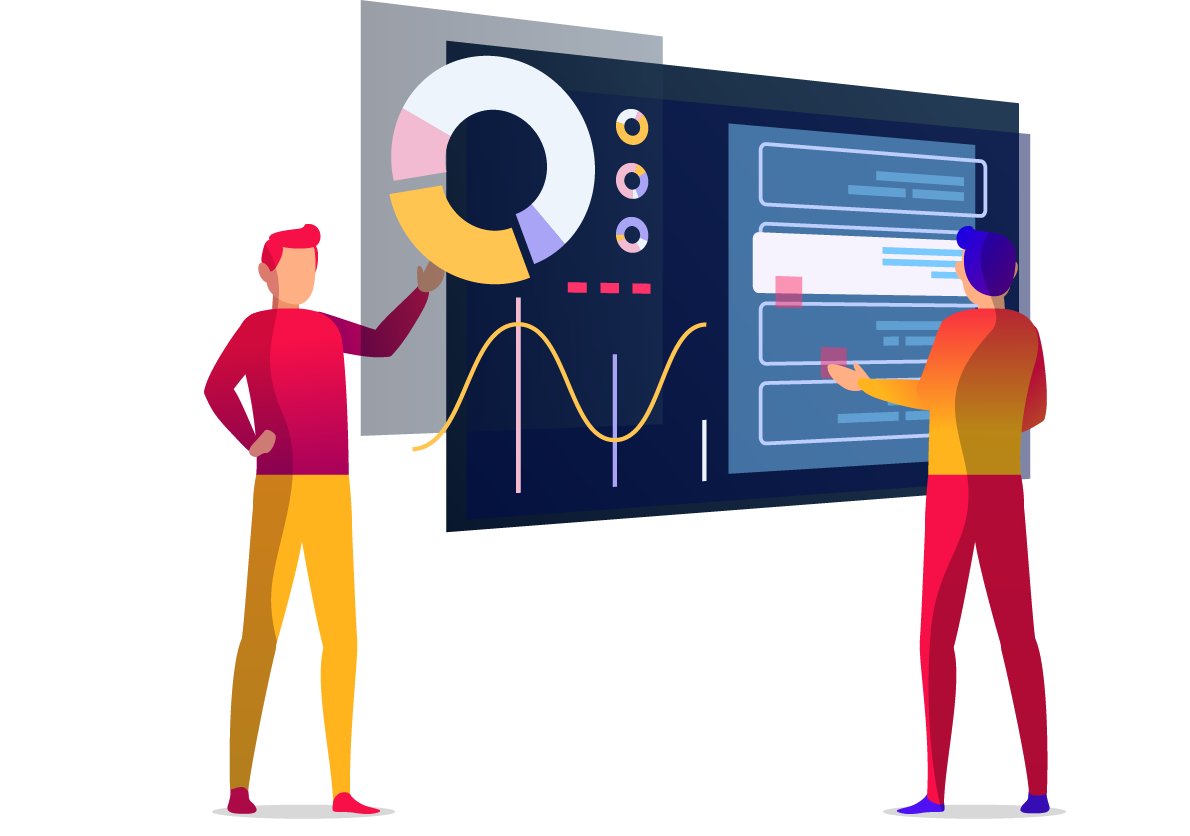
The market research industry hit the $45USD billion mark in 2017. However, growth is slowing, decreasing to 2% since 2015. Meanwhile, large tech companies known as FAANG, which stands for Facebook, Amazon, Apple, Netflix and Google, are leading the charge in disrupting the market thanks to their ability to reach billions of consumers and handle larger amounts of data.
First off, Facebook tracks users’ cookies across the internet and offers businesses ‘topic data,’ which shows marketers what audiences are saying on Facebook about events, brands, subjects and activities. Following the Cambridge Analytica scandal in 2018, data security has heightened. Even with anonymized and aggregated data collection, Facebook offers the market research industry invaluable information for making businesses’ products or services more relevant to consumers.
However, while Facebook can be used to evaluate how many science fiction fans also own an iPhone, Facebook has no intention of giving away the key to their treasure trove of consumer insights to brands and market research companies… for free. At the end of the day, Facebook is a business, and it’s in their best interest to lock those insights within their advertising product. As a result, third-parties need to run ads on Facebook to acquire customers. Alternatively, they can use the platform to gain more specific customer insights by running surveys, testing different target audiences or testing messaging.
In an op-ed published in the Wall Street Journal on January 24th 2019, Mark Zuckerberg explained how data privacy converged with Facebook’s business interest: “We don’t sell people’s data, even though it’s often reported that we do. In fact, selling people’s information to advertisers would be counter to our business interests, because it would reduce the unique value of our service to advertisers.”
Apple amasses swathes of user and health information focusing on the when, why and how of smartwatch and phone usage, whereas Google collects more data on consumers than any other company on the planet. Indeed, Google equips marketers with a toolbox of tricks to strengthen marketing strategy via ‘think with Google.’
Amazon’s AI-powered Alexa gathers information in private spaces and seeks to enter all corners of the home. Meanwhile, the ‘N’ of FAANG, Netflix, harvests data to tailor trailers and create user-specific content. Thanks to the digital revolution, big data mining is commonplace. The surge in popularity for FAANG’s market research begs the question: is there still room for market research firms – particularly those using conventional methods – to gather information?
One company that relies unilaterally on its in-house market research prowess is Amazon, which spends a whopping $17.4 billion annually on research. Jennifer Wise, an analyst for Forrester, explains: "Unlike Google, which is already embedded into many people's lives through phones, partnerships, and other — Amazon-created devices are Amazon's entrance into mass customer data." Amazon is convinced of the importance of quick, high-quality qualitative research to answer consumer needs, and as such, is taking small steps into our own homes.
Their smartphone failure, the ‘Amazon Fire,' is a clear indication it will not be able to obtain consumer data through mobile technology; consequently, cultivating data at home is the next logical step. The company sees its AI-powered voice assistant Alexa and all the devices in which it can live as “windows into our purchase behaviour," and opportunities for steering that behaviour in a direction that benefits Amazon.
It’s also a self-feeding cycle: the more Alexa is used, the more we provide data to Amazon, which in turn “helps Amazon improve its algorithms, customer experience quality, and try to corner the intelligent assistant market,” Wise adds.
Self-feeding cycles aptly describe the Netflix creation process. Now, the script for launching a gripping television series is as follows: screenwriters gather information from focus groups and market research models, consult reputed reviewers in the industry and attempt to predict, as confidently as possible, where thriller, spy or comedy genre trends might be best lead. An informed, educated and experienced stab-in-the-dark sadly means that there are more flops than five star ratings. Netflix, however, creates original content based on user data.
We all know Netflix recommends content based on its complex algorithms that mine rich behavioural data collected on users using the “if you liked this, then maybe you will enjoy this” strategy. Netflix can also ensure that TV shows reach the right audience, increasing the new viewer conversion rate. To this end, Netflix made ten different versions of the trailer for House of Cards to target different audiences. Fans of Kevin Spacey (Netflix knows if you are a Spacey fan thanks to viewing history) watched trailers that were Spacey-centric, while female-protagonist enthusiasts viewed trailers starring Claire Underwood, Spacey’s on-screen wife, to highlight the role of women in the show.
What’s more, Netflix has skyrocketed the likelihood of commissioning a second season of one of their series from 35% to 80%. The secret is to apply big data crunching and analysis to its 117 million subscribers. In essence, four in five Netflix series will produce a successful repeat season, whereas standard television series created through collaborative efforts between writers, marketing executives, creative directors and focus groups suffer less than a two in five chance of being commissioned for a second installment.
Faced with tremendous advancements in using data for research purposes, one would expect the industry to be running scared. Presumably, it is only a matter of time before other industries follow television’s market research demise?
The YouGov CEO, Stephan Shakespeare, is unabashed: “There is still an important place for market research, there are certain questions that can only be addressed by a single large study. It (big data) is not the end of traditional market research; it just becomes more of a niche area.”
Allan Fromen, UBS Global Technology Lead sums up succinctly, “while big data can’t answer all our questions, it is a terrific addition to our toolkit, and should be viewed as complementary to traditional market research methods.” Niche market researchers like POTLOC offering hyperlocal surveying and analysis for businesses in a given area may stand to prosper.
Industry professionals divulge that although big data is vital, making sense of the information is far more critical. Steve Wills, Director of the Insight Management Academy, comments: “Big data on its own is not enough. Big data companies are waking up to the fact that they need the market research industry to make sense of their information. We must help our clients get value from the information and measure return.”
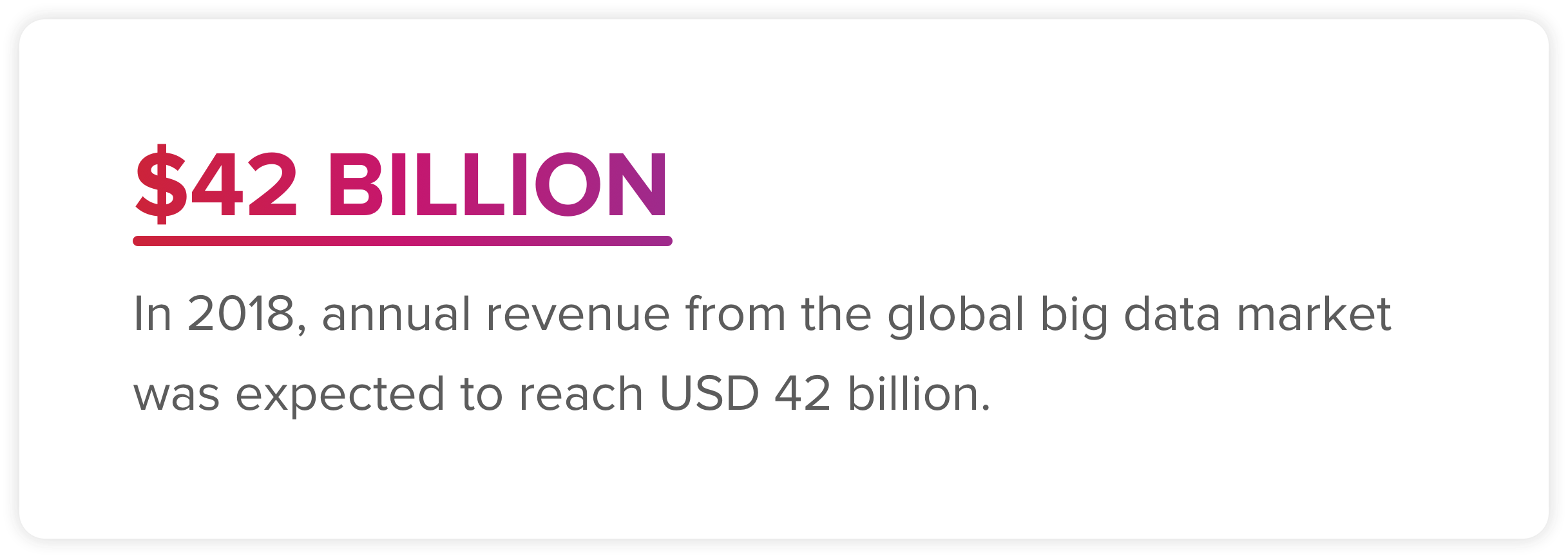
Indeed, in the face of FAANG’s elevated positioning on market research, the future of the industry may involve a fusion of traditional methodologies and practices. As surveying, data mining and information sourcing materialize faster, the quality increases and costs inevitably come tumbling down. Two distinct parties tug at both ends of the information spectrum: software engineers and IT professionals devoted to big data discovery, as well as traditional market research companies. The future is a blend of these worlds to deliver more pronounced and meticulous insights.
FAANG may appear to have the upper hand, effectively straddling market research methods and harnessing big data information, but market research analysis, particularly at unique companies, can play a role.
“The winners in market research will be those companies that can break down silos so that they can harness the power of big data in a digital world.” Gideon Spanier
With a focus on reporting, analysis and statistics, the market research industry could become a good candidate for AI disruption. What could the rise of artificial intelligence really bring to market researchers and the discipline in general? Let’s discuss the opportunities this upcoming transformation could bring.
Artificial intelligence could have a deep impact on product development and qualitative research, which would reduce reliance on complex testing. Companies such as easyJet are already using AI for predicting consumer demand via sales forecasting. The European airline uses predictive analytics for planning flight times and destinations, as well as for items served on flights. The predictive capability of artificial intelligence could help many organizations better understand and plan for their business needs.
Traditional market research methodologies sometimes have to undertake numerous stages of analysis before they can deliver meaningful insights. Researchers had to dig deep in the data pool, scratch the bottom and hopefully retrieve something meaningful. Through AI market research tools, insights can be delivered in a compact format in real time as the data comes in. The constant aggregation and assessment of data with advanced research tools can further enhance insights. The more data they encounter through machine learning, research solutions will get smarter and more precise.
A chatbot-powered survey experience could potentially be a more enjoyable experience for a survey respondent. Recently, Michigan State University and YouGov performed an experiment using Facebook's Messenger chatbot to conduct a consumer electronics survey.
The experiment consisted of using identical surveys via a Messenger bot and a traditional online survey. The survey used a series of yes/no questions regarding intent to purchase consumer electronics and open-ended follow-up questions.
The respondents who completed the survey via the Facebook Messenger chatbot rated the overall survey experience significantly higher than those who took the web-based survey on a mobile device (partly due to the more intuitive interface).
AI could produce more accurate survey data by lowering chances of human bias. Case in point: in a focus group, information is most often collected through human interaction. The interviewer will remember answers and other information in a certain way according to who they are as a personal; hence creating a chance for bias in their report. With advanced artificial intelligence, human bias may be reduced because AI models can be programmed to avoid this behaviour.
IBM is one vendor investing in better AI through balanced datasets. “AI holds significant power to improve the way we live and work, but only if AI systems are developed and trained responsibly, and produce outcomes we trust,” states IBM fellows Aleksandra Mojsilovic and John R. Smith. “Making sure that the system is trained on balanced data, and rid of biases is critical to achieving such trust.”
Furthermore, IBM is calling for better AI training and awareness. “It is therefore critical that any organization using AI — including visual recognition or video analysis capabilities — train the teams working with it to understand bias, including implicit and unconscious bias, monitor for it, and know how to address it,” Mojsilovic and Smith went on to say.
Evidently, there is still a fair amount of uncertainty when it comes to the utilization of artificial intelligence in the market research industry. That being said, its potential advantages are quite encouraging.
Consumer research is currently undergoing a transformation due to a number of emerging technologies. Here are ten noteworthy aspects of this revolution that will tremendously help market researchers in the near future.
San Francisco-based market research company InterQ has found success using real-time market research. InterQ notes that “capturing a customer’s feedback in the moment yields the most honest data.” An example of this method is discovering how a customer engages with your app. Interacting and capturing real-time feedback leads to “very different responses than having a customer try and remember exactly what they were experiencing a few days or months later in a focus group or during an interview.”
Furthermore, real-time market research is flexible and can quickly adapt to how users are responding. Since companies are constantly launching new products, it’s “more important than ever that capturing customer feedback be in the moment.”
Although big data remains a priority for many market research firms, others have recently gained interest in microdata: the insight of data regarding the behaviour of individual customers.
Sometimes it is important to gain an in-depth understanding of the market and its customers, which can be hard to obtain through macro-level data patterns.
Statistics Canada provides resources on modern microdata collection frameworks such as “public use microdata files,” “direct access to detailed microdata in a secure physical environment” and “remote access solutions.”
Gamification
Nowadays, consumer research surveys can require substantial time investment and concentration for the responder. Meet Attest, a UK-based startup that built a market research platform to enables companies to get “market insights quicker and more often.”
Attest surveys are “bite-sized” and can be done on mobile devices, similarly to casual gaming or checking social media profiles, and are designed to play on five emotions that Attest believes increase the likelihood of market research participation: “contributing, learning, enjoying, rewarding and feeling valuable.”
Augmented reality could unleash market researchers’ creativity by adding unusual elements into common retail environments.
Imagine a survey task in which respondents are asked to go into a supermarket and rate packaging and point of sale, receiving prompts as they go around the store using a dedicated augmented reality app a la Pokemon Go. Or what about a transit check-in system, where participants can move around the area to show where they would expect to see specific elements rather than where they actually are?

There have been a number of retailers using digital co-creation tools in recent times. A good example is Glossier, an online-only cosmetics company. The company has a very engaged, loyal community of users and Glossier has done a great job of asking questions and listening to feedback to then create products or services that respond to this exchange.
While some companies will probably stick to a more traditional product development framework, others may work with a market research company to help develop good questions, guide the customer engagement journey, and collect the generated data.
Internet of Things (IoT) devices are already producing huge amounts of data about multiple aspects of our lives and such a trend is expected to dramatically increase over the next few years.
Picture an energy company wanting to understand its customers’ energy use over Christmas or New Year’s Eve. Historically, it was only possible to see how much each customer was using when a meter reading was submitted, then maybe analyze this data in conjunction with a survey about energy use over the period.
Evidently, smart meters and wirelessly connected central heating controllers can generate a much richer stream of consumer data.
Behavioural economics has shown people don’t consistently make rational decisions. In fact, our decision-making process is often driven by quick, subconscious, intuitive thought (also called “System 1” thinking).
A set of early-stage methodologies to measure these thought patterns has been under development and continues to evolve, including applied neuroscience, facial coding, biometric response, eye tracking, and Implicit Reaction Time (IRT). The latter measures “the length of time it takes for a respondent to answer a specific question; the faster the response, the stronger the presumed conviction.”
According to Marketing Daily Advisor, a recent significant trend is the implementation of deeper analytics integration. It is now possible to combine website analytics data, behavioural insights and emotional responses to online ads “into a single personalized picture of the consumer.”
Deeper back-end integration on the analytics side “allows marketers to put their market research into a broader context and better understand more fully how to apply those insights to their business.”
You can collect a lot of data from wearables such as Fitbit fitness trackers or the Apple Watch (with the users’ permission, that is).
Heart rate data could tell you about users’ reactions to a product, marketing contact or a service encounter. True data on a consumer’s weekly exercise regime could give you more accurate information into understanding their shopping and eating habits than traditional survey methods.
The above lists clearly suggests there are some fascinating, innovative technologies that are emerging in the ever-changing discipline of consumer research.
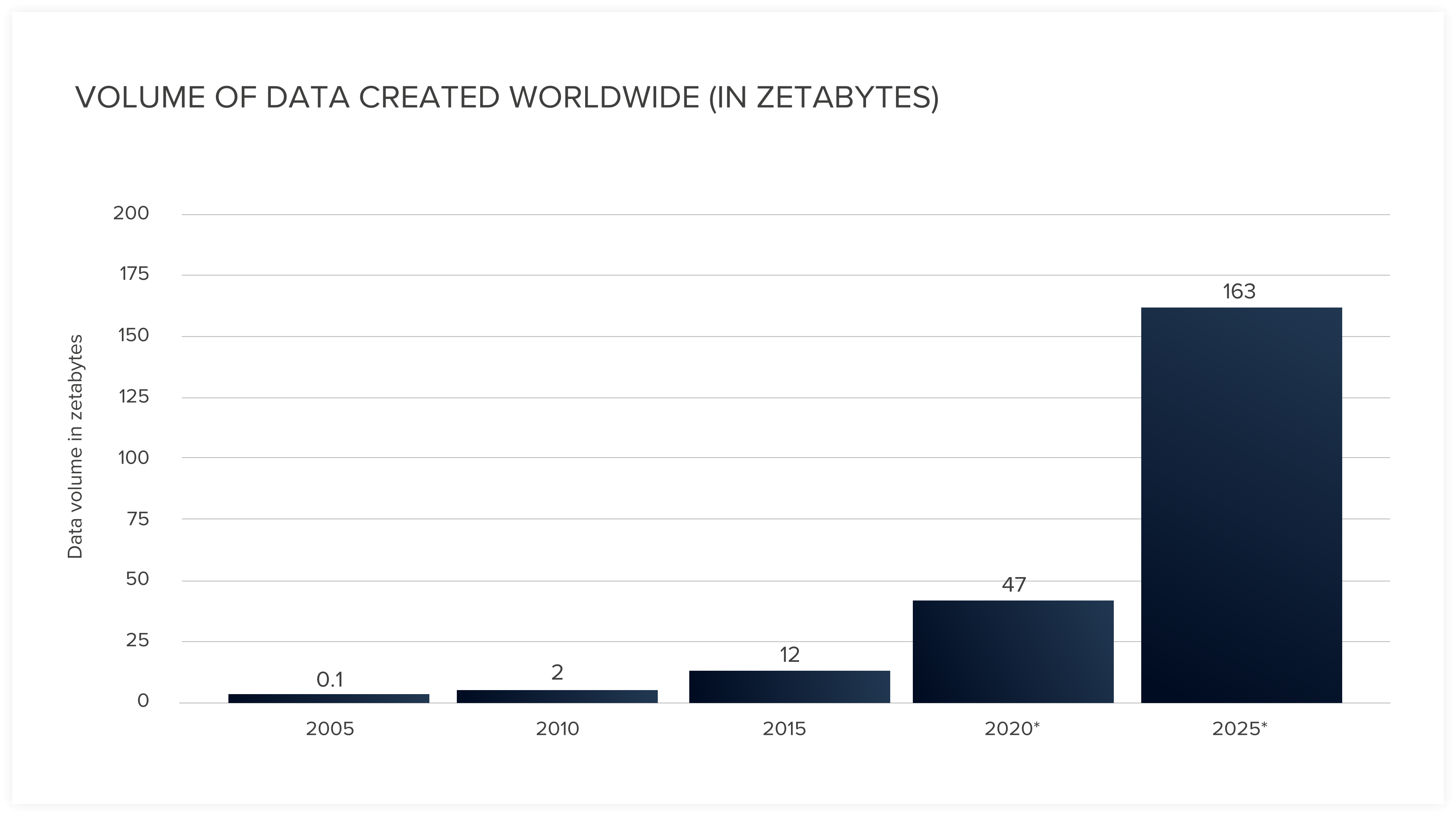
Due to emerging channels, new technologies, and a diminishing barrier to entry, innovative startups are disrupting consumer research. These developments are affecting traditional consumer and market research firms and some have partnered with these new entrants.
Founded in Provo, Utah, and Seattle, Washington in 2002, Qualtrics offers a single system of record for all experience data (called X-data). It enables organizations to manage four crucial experiences of business on a single platform: customer, product, employee and brand experience. About 8,500 enterprises around the globe are Qualtrics customers, including more than 80 percent of Fortune 100 companies as well as 99 of the top 100 U.S. business schools. In early 2019, German software giant SAP completed the acquisition of the company.
Research Now SSI was founded in the Dallas, Texas area in 1999 under the name “E-Rewards.” It is now the world's leading provider of first-party consumer and professional data based on considerable, proprietary market research panels. Around this main property of opted-in, managed data, the company has built innovative data services and solutions that “bring the voice of the individual to the entire marketing spectrum, from research to marketing to advertising.” Research Now SSI works with more than 4,000 market research agencies, media and advertising agencies, consulting and investment firms, as well as healthcare and corporate customers in the Americas, Europe, and Asia-Pacific.
Founded in 2013, San Francisco Bay Area-based Delighted offers a quick and easy way to gather customer feedback and “put it into the hands of those who can act on it.” Through the Net Promoter System (a single question and an open-ended comment box), Delighted helps companies align customers' needs with business growth, measure the customer voice over time and keep customers coming back. Their clients include Bose, Target, Uber and other well-known brands. In April 2018, Qualtrics (now part of SAP, as previously mentioned) acquired the company.
Paris, France-based Happydemics was founded in 2015 by Tarek Ouagguini following his observation that marketing decision-makers sometimes struggle drawing operational conclusions from consumer studies because they are expensive and complex. The accessible, cost-conscious Happydemics platform can conduct post-test studies to analyze the impact of an advertising campaign, measure the effectiveness of an influencer network, or ask consumers about their expectations of a brand or product. In the last three years, the company has surveyed more than 2.5 million individuals and completed 1,700 studies, including more than 1,000 post-test studies.
Founded in 2000 near Paris, Toluna provides companies with the ability to answer their target audience’s questions quickly and efficiently, leveraging a unique approach to respondent recruitment and engagement with its online “community” and proprietary real-time sampling methodology. Moreover, the company provides an online market research technology suite, enabling hundreds of market research organizations and agencies worldwide to create surveys, manage panels and build online communities. Currently, Toluna works with 5,000 global clients, manages over 21 million global community members in 68 countries and regions, and executes 28,000 survey projects annually.
Birmingham-based Voxpopme is a video insight platform with a growing global client list of brands and agencies. Since 2013, the technology behind the platform has allowed clients to push questions to consumers, targeting age, gender, and location for gaining feedback. Brands can capture consumer opinions through videos, analyze responses, and share insights. Thus, Voxpopme attracts a new element to market research: video. It has added a new dimension to customer experience surveys, net promoter score programs, brand trackers, customer communities, segmentation studies, new product development inititatives, ethnographies, market testing, focus group alternatives, as well as custom programs. As of date, Voxpopme has raised $7.5 million USD in funding.
Hailing from New York City, Remesh offers a platform for engaging and understanding a group of people, “whether it's customers, employees, prospects, constituents - online and in real-time.” The Remesh platform uses artificial intelligence to analyze, understand, and segment audience responses as they occur in order to easily extract high-impact insights and the answers vital to an organization's success. Remesh can be used for feedback, discovery, or ideation, and generate rich insights in mere hours. The startup has raised close to $14 million USD in funding since its inception in 2014.
Also hailing from the Big Apple, Suzy is a platform enabling businesses to harness intelligence from over a million consumers “at the push of the button so everyday decisions can now be data-driven.” Customers that license the Suzy platform can question a targeted group of consumers through several different forms (detailed surveys or multiple choice) and have hundreds of measurable responses during the same meeting. For example, if an apparel company wants to know what fashion-minded consumers think of a design, it can learn so during a design meeting. Suzy has raised a bit more than $26 million USD in funding since its launch in 2009.
Across the pond, London-based Zappi provides online market research tools to assist clients in their decision-making process. The company offers multiple solutions: “MMR Impackt Lite,” which offers a set of research tools comprised of traditional questioning, implicit techniques to deliver the optimization and validation for sound decision making; “Zappi Creative Static Test,”which evaluates individual advertisements, or compares and chooses between different options by evaluating various static ads to understand how they will perform in market in the short and long term; as well as “AdNow,” a market share and brand equity management system identifiying which competitors are a threat or an opportunity, and helps determine which customers should be targeted. Since its inception in 2012, the company has raised £12 million.
Launched in 2014 in Montreal, POTLOC (which is behind this whitepaper) performs social media surveys and crunches the data to help cities, real estate companies and retailers make better decisions. Furthermore, by gathering thousands of customer insights, POTLOC allows citizens to have an impact on their local environments while providing insights to businesses.
These new technologies have the potential to bring many advantages to actors in the retail and real estate sector, such as speed, deeper segmentation, cost reduction, data processing and so on. However, this isn’t necessarily the end of consumer research as we know it.
New technologies may still follow well-known methodologies, therefore we can expect more collaboration between traditional research firms and new entrants. In the end, the primary benefit one gets from utilizing digital tools is that they allow more space and time for analysis, interpretation, understanding and strategic thinking.
Times are changing and the innovative tech providers mentioned above may sooner or later become dominant within the research landscape.
Rédacteurs: Joseph Hall, Phil Siarri, Julien Brault, Mario Toneguzzi, Jérémie Caussin, Rodolphe Barrere.
Head of Marketing: Antoine Théorêt-Poupart.
Director of Content: Julien Brault.
Designer: Xavier Labaye